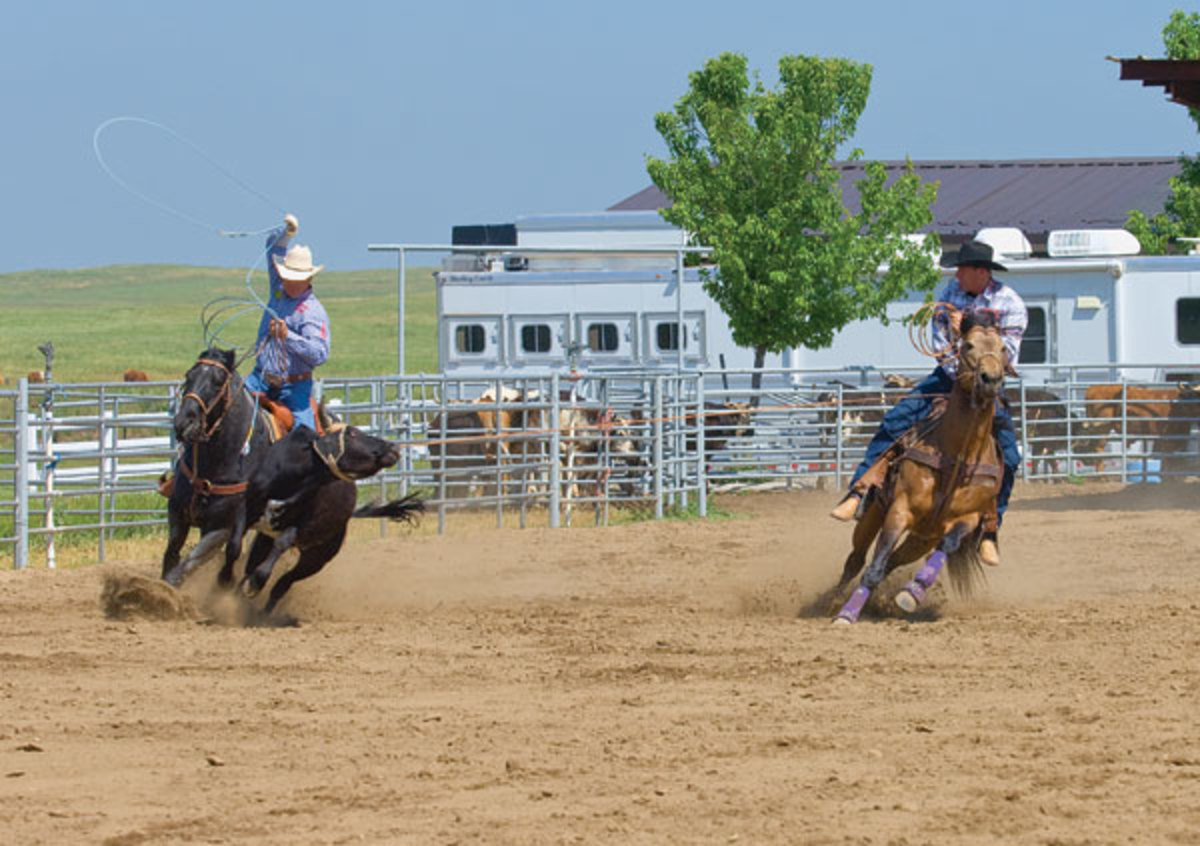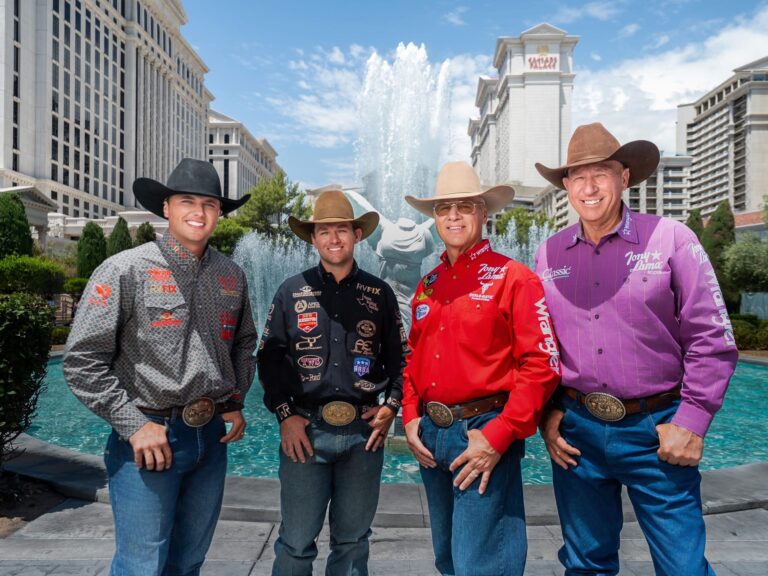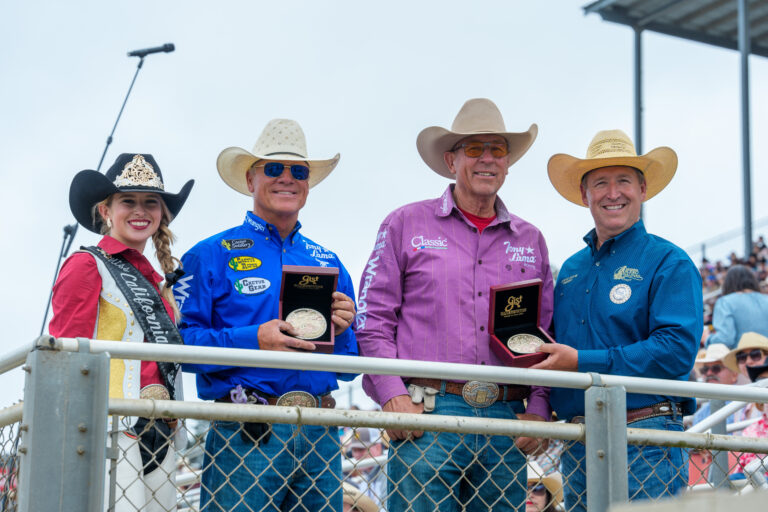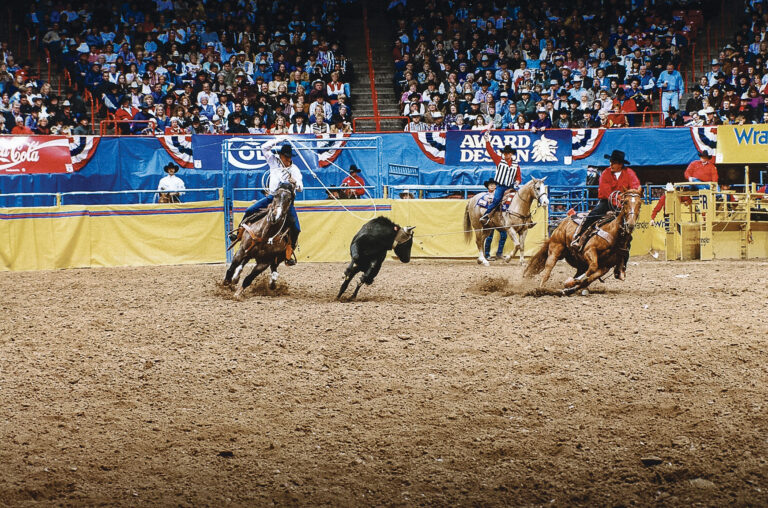You have to be conscious of where your feet are. When you lean and your feet get behind you, your feet can get in the flanks of your horse. You need to be conscious of where your feet are at all times during a run. If you get to leaning too much, your feet get back behind you. A lot of horses, especially younger horses, won’t rate when you do that. And if you hit one in the wrong spot with spurs on, he might even buck you off. You need to lean a little bit to rope, but if you lean too much you’re going to pay the price.

Your feet help maneuver your horse just like your left hand does. If a steer runs really hard and your horse wants to duck, you need to cross your left hand over and squeeze with your left leg, with your toe turned out, to hold your horse up. Use your spur to hold your horse in.

I’m a firm believer in spurs. You might run into a horse that’s super sensitive to spurs and overreacts. Different horses need different types of spurs, but generally speaking most horses are better with them than without them. Your feet are an integral part of maneuvering your horse.
[PAGEBREAK]
People think it’s all about the reins, but there is so much you do with your feet throughout a run. If your horse is tight in the box and you need to move him forward to free him up or keep him from leaning, you use your feet. I see people who don’t wear spurs on their horses, and they keep on kicking and their horses don’t respond at all. Use your feet, including in the corner when you take ahold of a steer.

On a medium running steer, after you stick it on him and as the steer’s head starts to come around, you squeeze with your right leg with your toe turned out to help your horse move out of there laterally. You want your horse’s head turned slightly back to the right toward the steer. You want him to slow that steer down, then as the steer’s head starts to come around you want your horse to move away laterally around the corner. You’re holding his shoulder up with your left hand, before you straighten out so he can start pulling.
It’s just good horsemanship to have a horse work off your legs and feet, whether you’re working a gate or roping a steer. That’s why it’s easier to rope on horses that are broke, with solid foundations. It’s a terrible, frustrating feeling to be on a horse that’s not broke.
When it comes to finishing the run, as you get your horse in a position and create an angle where it’s easiest to face, when you see that your heeler’s roped the steer and starts to lift his slack you pick up your reins to start to bring your horse’s head around. Then squeeze with your right leg behind the cinch area, so the horse kicks his hind end away from that leg pressure. A horse has to be broke off of your leg, and understand leg pressure, to be ready to face fast. I do facing drills on my horses. It’s a process that takes patience and
lots of repetition.








